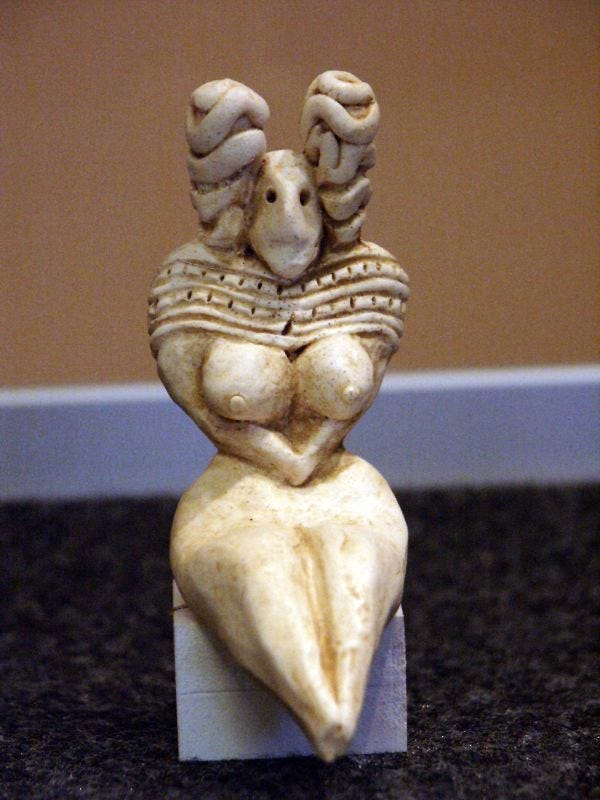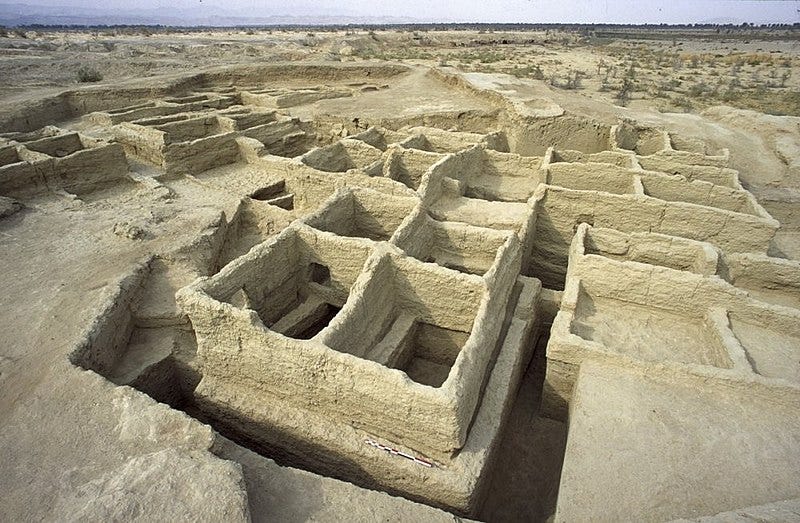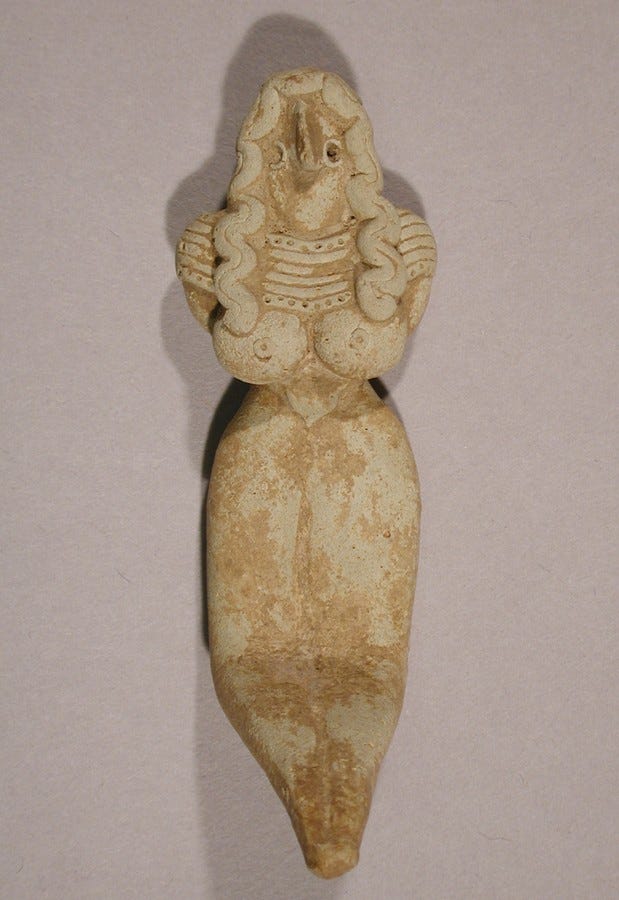Discovering the Pioneers of Dentistry: A Look into Mehrgarh's Past
Written on
Chapter 1: The Birth of Dentistry
Around 9,000 years ago, Neolithic farmers in South Asia demonstrated remarkable skills in dental care.

In 2006, the journal Nature unveiled a groundbreaking finding: the remains of nine individuals, dating back between 7,500 to 9,000 years, exhibited dental crowns that had been drilled while they were still alive. This discovery marks the earliest evidence of dental procedures in human history.
As agriculture began to flourish and communities settled, some early farmers in Mehrgarh, located in Pakistan's Balochistan province, pioneered dental techniques. This scientific advancement was extraordinary for its time.
Who were these early dental practitioners? Archaeological digs at the site of Mehrgarh revealed prehistoric individuals skilled in dental work. This settlement represents one of the earliest known centers of civilization in South Asia, showcasing innovative practices that date back to the Neolithic period (10,000 BC to 4,500 BC). During the Chalcolithic era (5000 BC to 2900 BC), the inhabitants also became adept metalworkers, mastering the lost-wax casting technique.
Established around 7000 BC and abandoned by 2600 BC, Mehrgarh stands as one of the longest-lasting cultures in history. Its influence continued into the Bronze Age, contributing significantly to the development of the Indus Valley civilization.
Let’s delve deeper into the intriguing life and achievements of the Mehrgarh community.
Chapter 2: Unveiling a Lost Civilization
In 1974, archaeologists Jean-Francois and Catherine Jarrige stumbled upon an abandoned mound at Mehrgarh, igniting a twelve-year excavation that unveiled an ancient Neolithic society. Initially mistaken for a city of the Indus Valley civilization, further analysis revealed that this settlement predated it.
Historically, it was believed that agriculture originated in Anatolia and spread outward. However, the Jarriges’ findings at Mehrgarh prompted a reevaluation of this theory, suggesting an independent agricultural origin in South Asia. Today, we recognize eleven such independent farming sites worldwide, with Mehrgarh prominently featured.
The settlers at Mehrgarh cultivated diverse wheat varieties and raised livestock. Evidence indicates specialized labor across various crafts like pottery, hunting, butchery, and trade. Unlike many Neolithic communities that engaged in local trade, Mehrgarh showcased examples of long-distance commerce, uncommon prior to urban development.
Mehrgarh is regarded as one of the longest continuously inhabited settlements globally, with evidence of its residents transitioning from farming to metallurgy over millennia. However, anthropologist John R. Lukacs notes that despite similarities between Neolithic and Chalcolithic cultures, dental findings suggest distinct populations.
The Neolithic inhabitants may have migrated to regions in southeastern Pakistan and northern India, while newcomers to Mehrgarh adopted their agricultural practices and cultural norms, as evidenced by the human figures and pottery unearthed.
Section 2.1: Cultural Artifacts and Their Significance

Mehrgarh is credited with producing the earliest known pottery in South Asia. Although the Neolithic designs were rudimentary, the artistic evolution is notable over time. The terracotta human figurines crafted by the Mehrgarh people reveal a clear development in their representation of femininity, with greater detail in breasts and hairstyles emerging around 4000 BC.
The significance of these figurines is a subject of ongoing debate among historians and archaeologists. Similar to many Neolithic farming cultures, a fertility cult was prominent in Mehrgarh, as indicated by the burial practices involving red ochre. These rituals imply a connection to fertility beliefs, with the female figurines possibly representing a fertility goddess or serving as toys or charms.
Historian Upinder Singh emphasizes the cultic importance of these figures but cautions against hastily labeling them as "mother goddesses."
Section 2.2: Pottery as a Reflection of Culture

The quality of ceramics produced in Mehrgarh was exceptional. Recently, I had the opportunity to view an exhibit showcasing pottery from Mehrgarh and the Indus Valley. To my untrained eye, the intricate designs of Mehrgarh's pottery, adorned with animal and plant motifs, surpassed the later Indus Valley ceramics in artistry.
As time progressed, Mehrgarh's pottery evolved, with copper vessels gradually replacing traditional clay forms, indicating advancements in scientific understanding and technological innovation.
The most significant advancement, however, occurred during the Neolithic era when the farmers of Mehrgarh demonstrated their knowledge of dental care.
Chapter 3: Innovations in Science and Trade

Recent analyses of the remains from Mehrgarh uncovered dental work that included eleven drilled molar crowns. The inhabitants utilized flint tools for this dental work, with the drill holes measuring between 1.3 mm and 3.2 mm in diameter, found in both jaws. This represents the earliest known instance of dental care in human history, showcasing what can be termed as proto-dentistry.
The dental innovations were a significant scientific milestone for the Mehrgarh community. Their next remarkable achievement was the discovery of the lost-wax casting method for metalworking.
Mehrgarh hosts the oldest known examples of lost-wax casting, dating back over 6,000 years. This technique was used to create a wheel-shaped amulet discovered at the site, where a wax mold is used to form a casting, allowing molten metal to replace the wax as it melts away.
Subsequently, the Indus Valley civilization adopted this technique, as evidenced by the iconic dancing girl figurine from Mohenjo-daro.
Moreover, the Mehrgarh inhabitants engaged in long-distance trade, as indicated by the presence of lapis lazuli from Afghan mines, alongside shells and carnelian beads acquired through extensive trade networks. The artifacts from trade date back to the Neolithic period, but the specifics of the trading routes remain unclear—whether direct or through intermediary communities is still a matter of speculation.
The cultural advancements of Mehrgarh were remarkable for their time. While lacking a defined social hierarchy or formal governance, the inhabitants laid the groundwork for a sophisticated civilization. By 2600 BC, they transitioned into the urban lifestyle of the Indus Valley civilization, with the nearest city, Nausharo, just a few miles away. This transition exemplifies a significant shift from agricultural to urban living within the same region.
For those intrigued by the mysteries surrounding the Indus Valley civilization, further exploration is warranted.
The first video, titled "The History of Dentistry! : Hidden Histories," provides an insightful exploration into the evolution of dental practices and their significance in ancient cultures.
The second video, "The Unfortunate History of TEETH I 2 Complicated 4 History I Podcast," delves into the complexities and challenges surrounding the history of dental care.
In conclusion, while the Mehrgarh culture achieved significant progress in various fields, many questions about their civilization remain unanswered. The legacy of this remarkable community continues to intrigue historians and archaeologists alike.
Sources
- Singh, Upinder, A History of Ancient and Early Medieval India: From the Stone Age to the 12th century, Dorling Kindersley
- Coppa, A. et al. 2006. “Early Neolithic tradition of dentistry: Flint tips were surprisingly effective for drilling tooth enamel in a prehistoric population.” Nature, Volume 440.
- Lukacs, J. R., Dental Morphology and Odontometrics of Early Agriculturalists from Neolithic Mehrgarh, Pakistan
- Coningham, Robin; Young, Ruth (2015), The Archaeology of South Asia: From the Indus to Asoka, c.6500 BCE–200 CE, Cambridge University Press